Research on a Data Preprocessing Method for a Vehicle-Mounted Solar Occultation Flux–Fourier Transform Infrared Spectrometer
Abstract
1. Introduction
2. Spectral Data Preprocessing Methods
2.1. Spectral Anomaly Cause Analysis
2.2. Data Preprocessing Methods
3. Preprocessing Experiments for Simulated Spectra
3.1. Simulation of Abnormal Spectra
3.2. Experimental Results and Analysis
4. Data Acquisition and Processing
4.1. Experimental Instruments
4.2. Data Acquisition
4.3. Analysis of the Experimental Results
5. Conclusions
Author Contributions
Funding
Institutional Review Board Statement
Informed Consent Statement
Data Availability Statement
Conflicts of Interest
References
- Sussmann, R.; Stremme, W.; Buchwitz, M.; De Beek, R. Validation of ENVISAT/SCIAMACHY columnar methane by solar FTIR spectrometry at the Ground-Truthing Station Zugspize. Atmos. Chem. Phys. Discuss 2005, 5, 2419–2429. [Google Scholar] [CrossRef]
- Mellqvist, J.; Samuelsson, J.; Johansson, J.; Rivera, C.; Lefer, B.; Alvarez, S.; Jolly, J. Measurements of industrial emissions of alkenes in Texas using the solar occultation flux method. J. Geophys. Res. 2010, 115, D00F17. [Google Scholar] [CrossRef]
- Baidar, S.; Kille, N.; Ortega, I.; Sinreich, R.; Thomson, D.; Hannigan, J.; Volkamer, R. Development of a digital mobile sun tracker. Atmos. Meas. Tech. 2016, 9, 963–972. [Google Scholar] [CrossRef]
- Washenfelder, R.A.; Toon, G.C.; Blavier, J.-F.; Yang, Z.; Allen, N.T.; Wennberg, P.O.; Vay, S.A.; Matross, D.M.; Daube, B.C. Carbon dioxide column abundances at the Wisconsin Tall Tower site. J. Geophys. Res. Atmos. 2006, 111, 22305. [Google Scholar] [CrossRef]
- Connor, B.J.; Sherlock, V.; Toon, G.; Wunch, D.; Wennberg, P.O. GFIT2: An experimental algorithm for vertical profile retrieval from near-IR spectra. Atmos. Meas. Tech. 2016, 9, 3513–3525. [Google Scholar] [CrossRef]
- Qu, L.; Liu, J.; Deng, Y.; Xu, L.; Hu, K.; Yang, W.; Jin, L.; Cheng, X. Analysis and Adjustment of Positioning Error of PSD System for Mobile SOF-FTIR. Sensors 2019, 19, 5081. [Google Scholar] [CrossRef] [PubMed]
- Shen, X.; Ye, S.; Xu, L.; Hu, R.; Jin, L.; Xu, H.; Liu, J.; Liu, W. Study on baseline correction methods for the Fourier transform infrared spectrum with different signal-to-noise ratios. Appl. Opt. 2018, 57, 5794–5799. [Google Scholar] [CrossRef] [PubMed]
- Shao, L.; Pollard, M.J.; Griffiths, P.R.; Westermann, D.T.; Bjorneberg, D.L. Rejection criteria for open-path Fourier transform infrared spectrometry during continuous atmospheric monitoring. Vib. Spectrosc. 2007, 43, 78–85. [Google Scholar] [CrossRef]
- Liu, Z. Study on the Vehicular FTIR-SOF Monitoring Method for Industrial Emission of Harmful Gases. Ph.D. Thesis, Chinese Academy of Sciences, Beijing, China, 2010. [Google Scholar]
- Ahookhosh, M.; Artacho, F.J.A.; Fleming, R.M.T.; Vuong, P.T. Local convergence of the Levenberg-Marquardt method under Holder metric subregularity. Adv. Comput. Math. 2019, 45, 2771–2806. [Google Scholar] [CrossRef]
- Chalup, S.; Maire, F. A study on hill climbing algorithms for neural network training. In Proceedings of the 1999 Congress on Evolutionary Computation-CEC99 (Cat. No. 99TH8406), Washington, DC, USA, 6–9 July 1999; Volume 3, pp. 2014–2021. [Google Scholar] [CrossRef]
- Dimitrov, D.K.; Peixoto, L.L. An Efficient Algorithm for the Classical Least Squares Approximation. SIAM J. Sci. Comput. 2020, 42, A3233–A3249. [Google Scholar] [CrossRef]
- Hammer, C.L.; Small, G.W.; Combs, R.J.; Knapp, R.B.; Kroutil, R.T. Artificial Neural Networks for the Automated Detection of Trichloroethylene by Passive Fourier Transform Infrared Spectrometry. Anal. Chem. 2000, 72, 1680–1689. [Google Scholar] [CrossRef] [PubMed]
- Yuan, S.; Shi, L.; Yao, B.; Li, F.; Du, Y. A Hyperspectrum Anomaly Detection Algorithm Using Sub-Features Grouping and Binary Accumulation. IEEE Geosci. Remote Sens. Lett. 2022, 19, 6007505. [Google Scholar] [CrossRef]
- Ma, K.; Leung, H.; Jalilian, E.; Huang, D. Deep learning on temporal-spectrum data for anomaly detection. In Proceedings of the Ground/Air Multisensor Interoperability, Integration, and Networking for Persistent ISR VIII: 101900D, Anaheim, CA, USA, 4 May 2017. Society of Photo-optical Instrumentation Engineers. International Society for Optics and Photonics. [Google Scholar]
- Kohonen, T. Self-organized formation of topologically correct feature maps. Biol. Cybern. 1982, 43, 59–69. [Google Scholar] [CrossRef]
- Ripalda, J.M.; Buencuerpo, J.; García, I. Solar cell designs by maximizing energy production based on machine learning clustering of spectral variations. Nat. Commun. 2018, 9, 5126. [Google Scholar] [CrossRef] [PubMed]
- Shalaginov, A.; Franke, K. A New Method for an Optimal SOM Size Determination in Neuro-Fuzzy for the Digital Forensics Applications. In Proceedings of the Advances in Computational Intelligence: 13th International Work-Conference on Artificial Neural Networks, IWANN 2015, Palma de Mallorca, Spain, 10–12 June 2015; International Work-Conference on Artificial Neural Networks. Springer: Cham, Switzerland, 2015. [Google Scholar] [CrossRef]
- Xu, L.; Hu, K.; Yang, W.; Qu, L.; Deng, Y.; Jin, L.; Cheng, X. An Automatic Solar Tracking Device and Method on a Mobile Platform. CN201911346126.3, 24 December 2019. (In Chinese). [Google Scholar]


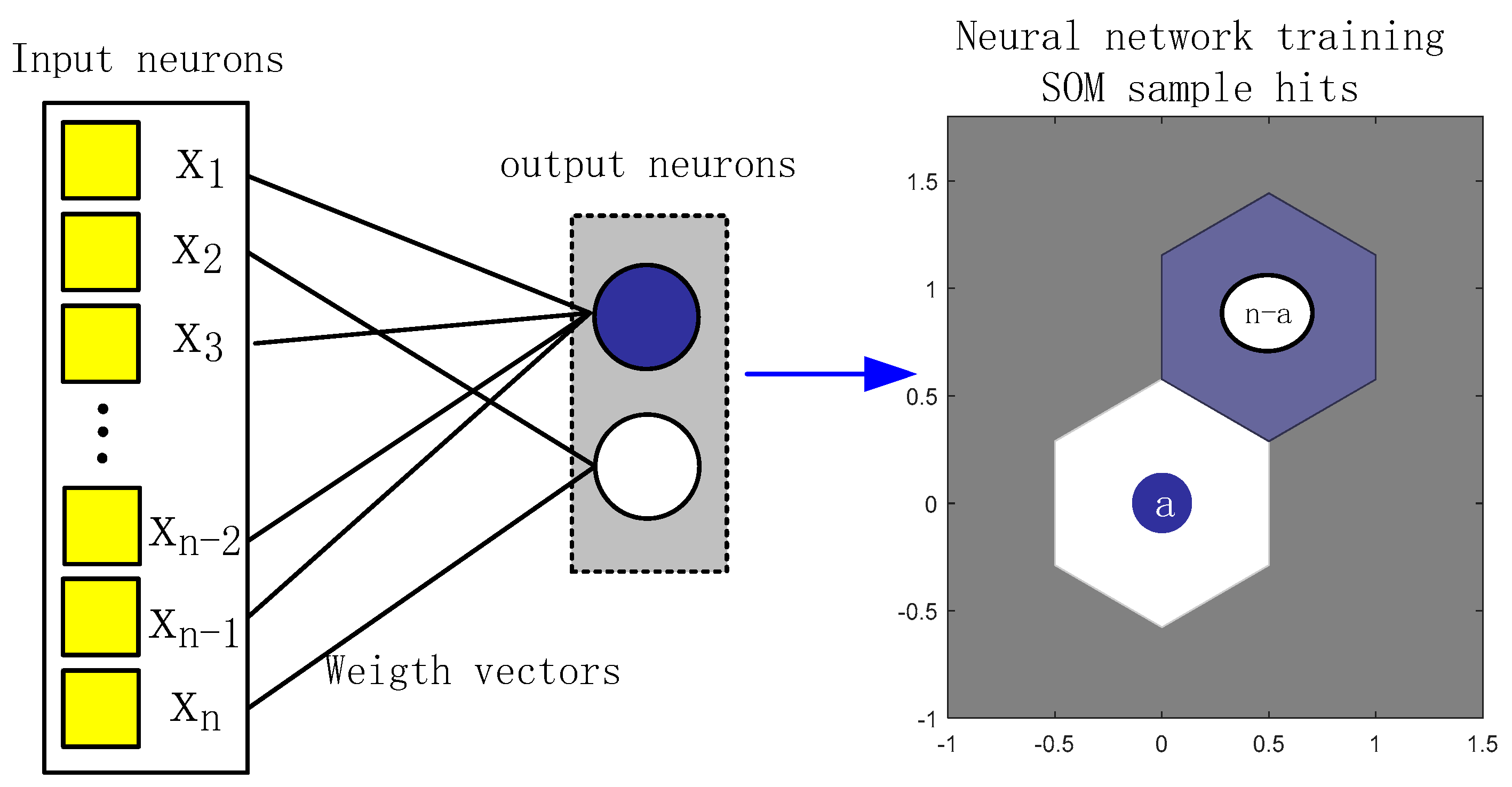
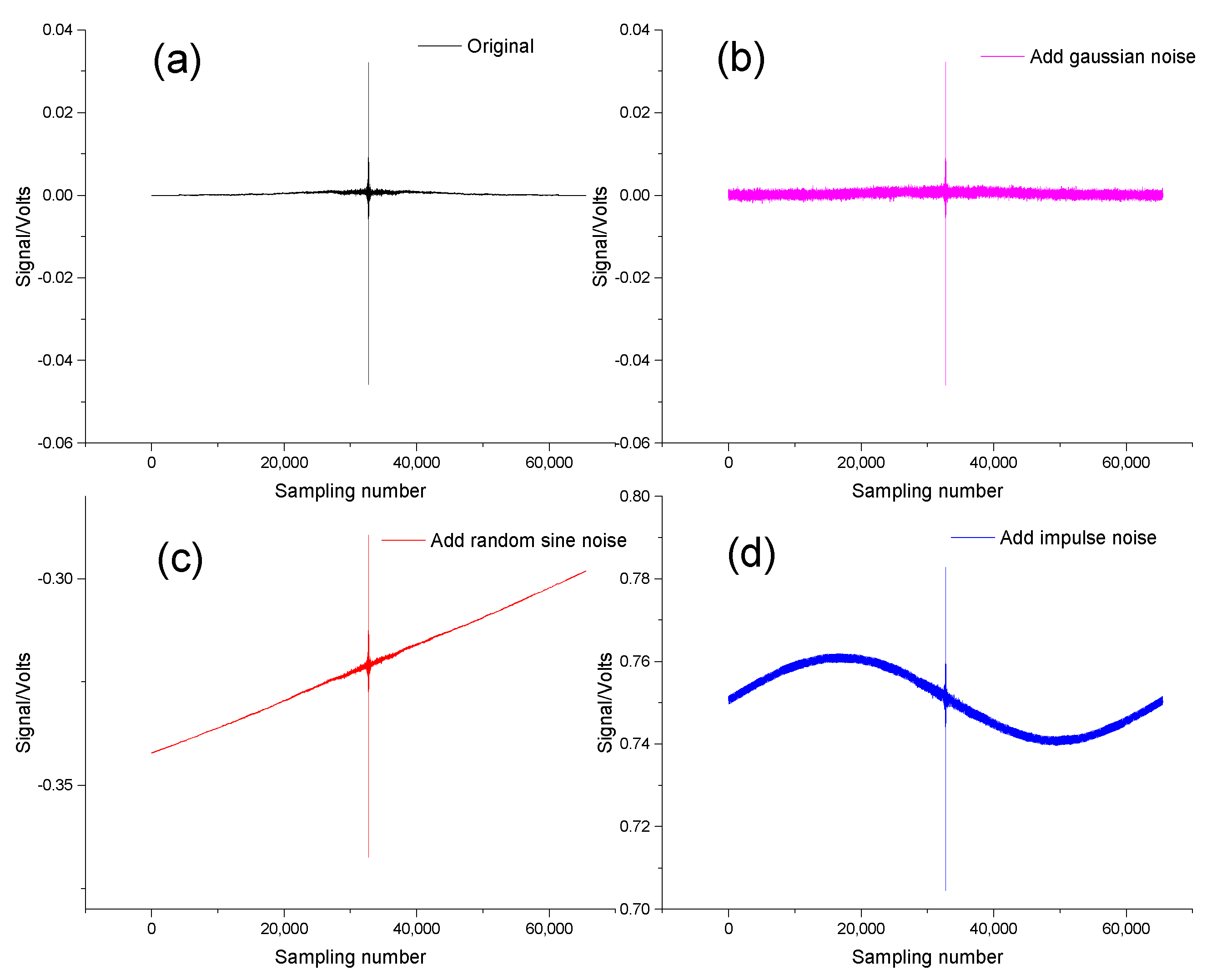


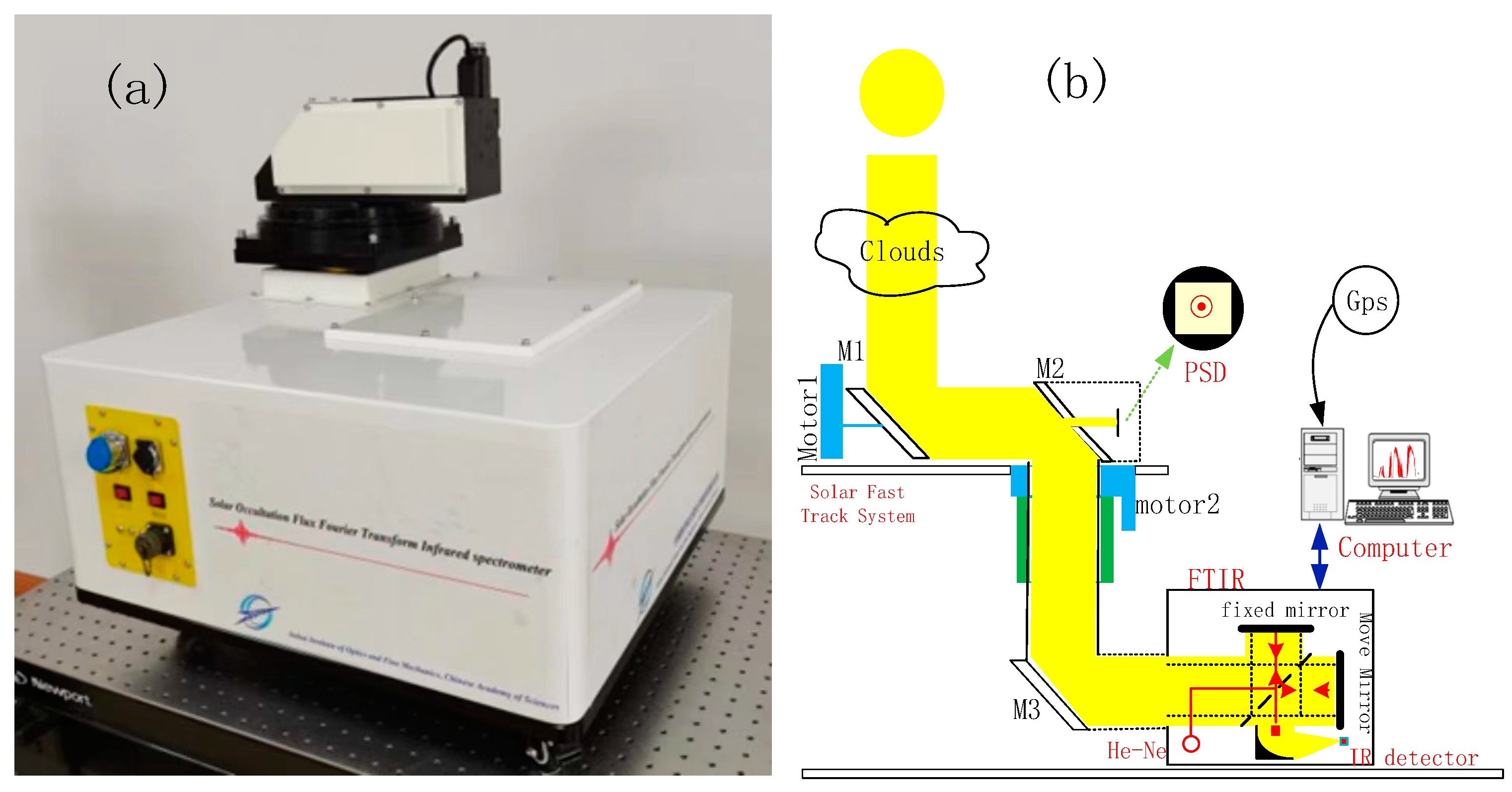
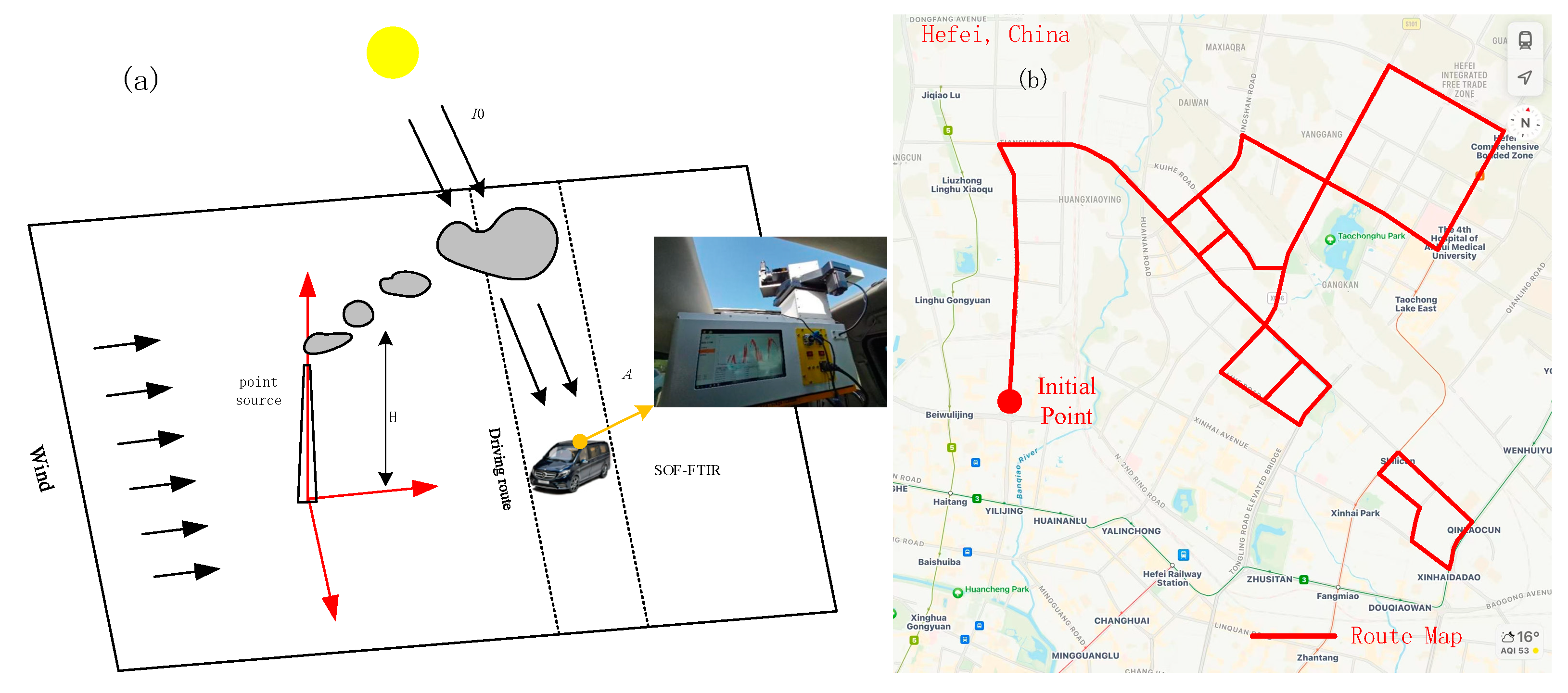
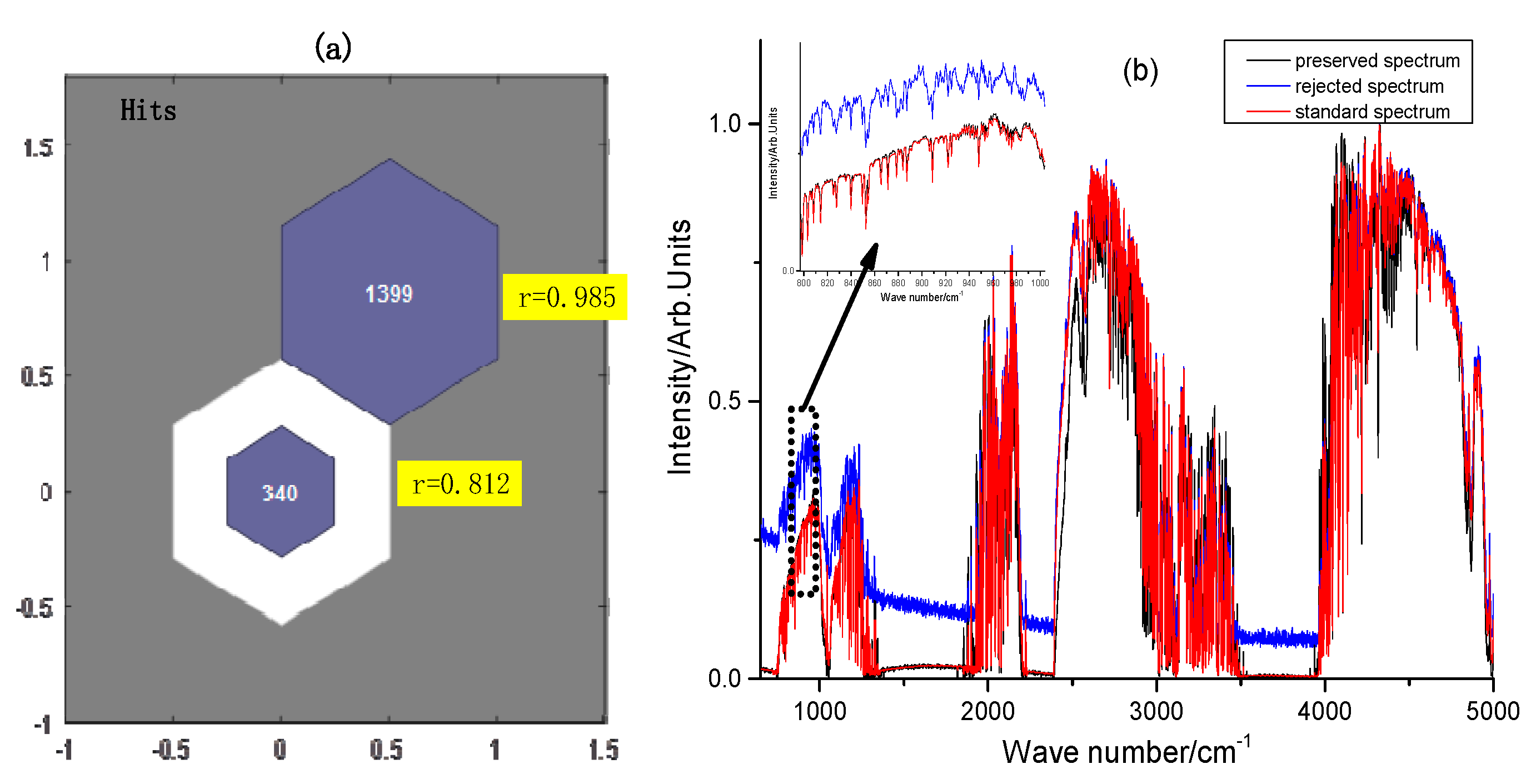
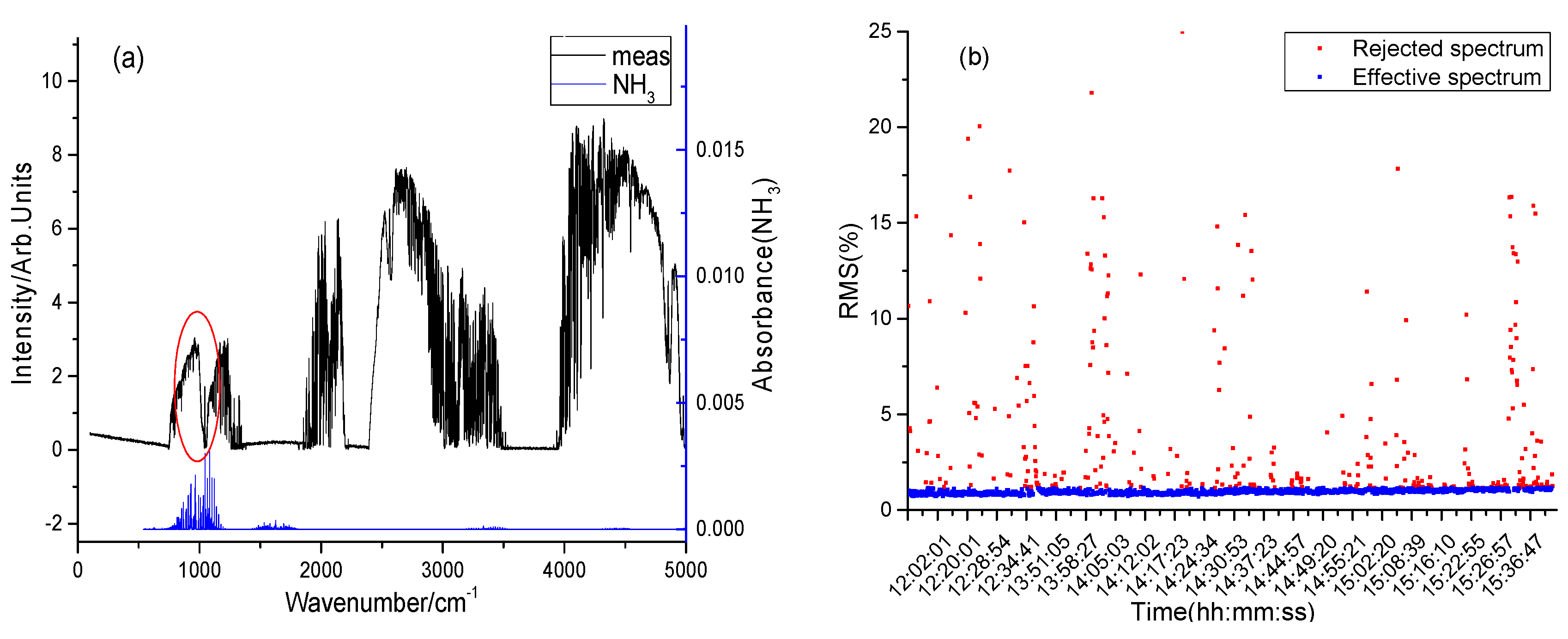
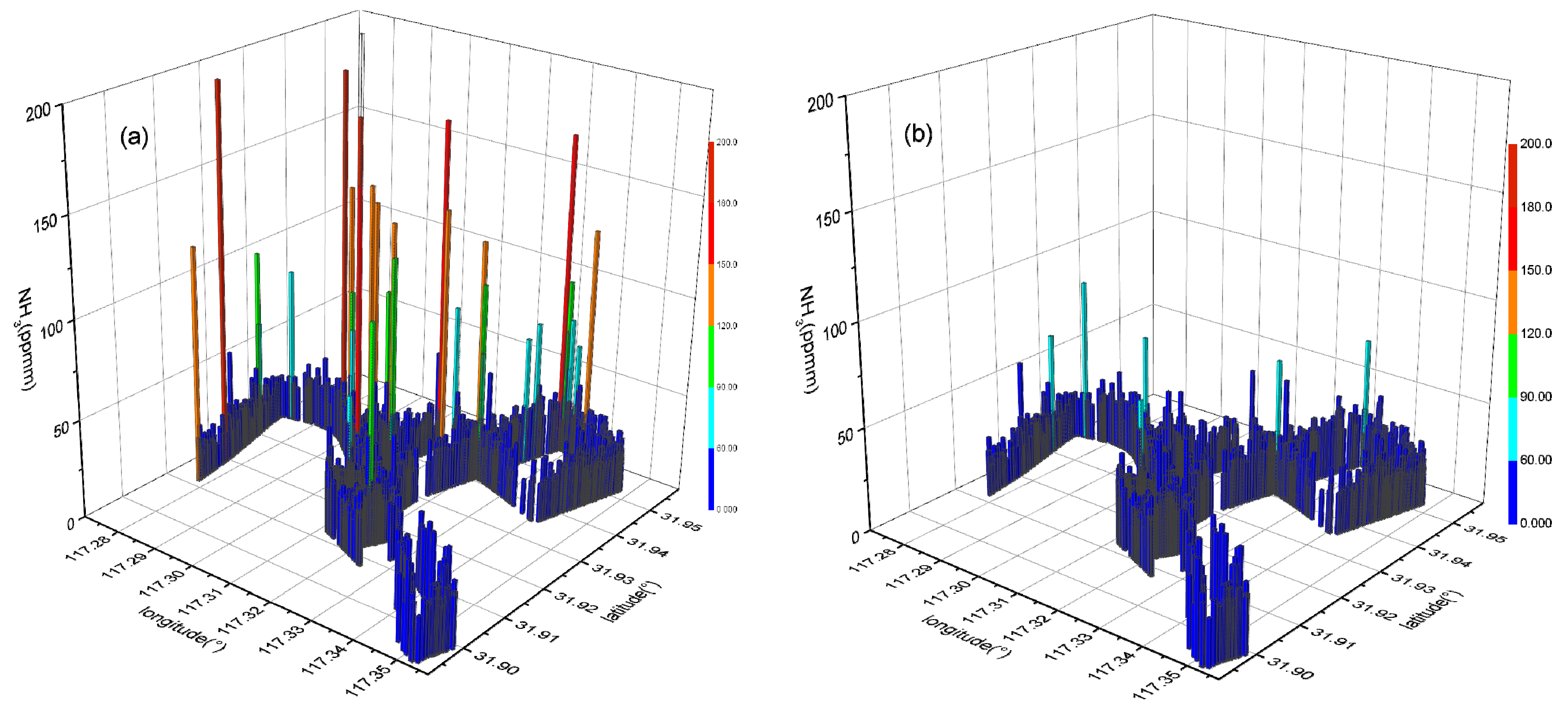
Disclaimer/Publisher’s Note: The statements, opinions and data contained in all publications are solely those of the individual author(s) and contributor(s) and not of MDPI and/or the editor(s). MDPI and/or the editor(s) disclaim responsibility for any injury to people or property resulting from any ideas, methods, instructions or products referred to in the content. |
© 2024 by the authors. Licensee MDPI, Basel, Switzerland. This article is an open access article distributed under the terms and conditions of the Creative Commons Attribution (CC BY) license (https://creativecommons.org/licenses/by/4.0/).
Share and Cite
Deng, Y.; Xu, L.; Jin, L.; Sun, Y.; Shu, S.; Liu, J.; Liu, W. Research on a Data Preprocessing Method for a Vehicle-Mounted Solar Occultation Flux–Fourier Transform Infrared Spectrometer. Photonics 2024, 11, 541. https://doi.org/10.3390/photonics11060541
Deng Y, Xu L, Jin L, Sun Y, Shu S, Liu J, Liu W. Research on a Data Preprocessing Method for a Vehicle-Mounted Solar Occultation Flux–Fourier Transform Infrared Spectrometer. Photonics. 2024; 11(6):541. https://doi.org/10.3390/photonics11060541
Chicago/Turabian StyleDeng, Yasong, Liang Xu, Ling Jin, Yongfeng Sun, Shengquan Shu, Jianguo Liu, and Wenqing Liu. 2024. "Research on a Data Preprocessing Method for a Vehicle-Mounted Solar Occultation Flux–Fourier Transform Infrared Spectrometer" Photonics 11, no. 6: 541. https://doi.org/10.3390/photonics11060541
APA StyleDeng, Y., Xu, L., Jin, L., Sun, Y., Shu, S., Liu, J., & Liu, W. (2024). Research on a Data Preprocessing Method for a Vehicle-Mounted Solar Occultation Flux–Fourier Transform Infrared Spectrometer. Photonics, 11(6), 541. https://doi.org/10.3390/photonics11060541





